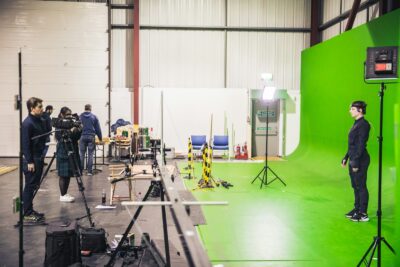Understanding the Impact of Zero-Gravity Mechanics in VR
Exploring the Innovation Behind Lone Echo
Lessons from Lone Echo’s zero-gravity VR experience offer invaluable insights into how innovative mechanics can transform virtual reality storytelling. “Lone Echo,” developed by Ready At Dawn, has gained acclaim for its use of zero-gravity mechanics, which significantly enhances its immersive narrative. Set in a futuristic space station, the game challenges players to navigate a zero-gravity environment, creating a unique and engaging experience that pushes the boundaries of traditional VR.
The zero-gravity mechanics in “Lone Echo” are not just a gimmick but a fundamental aspect of the gameplay and storytelling. Players use their hands to push off surfaces and maneuver through the environment, simulating the sensation of floating in space. This mechanic allows for a more natural interaction with the VR space, enhancing the sense of immersion and realism. By integrating zero-gravity into both the narrative and gameplay, “Lone Echo” exemplifies how mechanical innovation can deepen the player’s connection to the virtual world.
Additionally, “Lone Echo” employs a first-person perspective and high-quality voice acting to further engage players. The combination of these elements creates a compelling and emotionally resonant experience, demonstrating the effectiveness of aligning VR mechanics with narrative goals. This approach highlights the potential of VR to offer rich, interactive storytelling that traditional media cannot match, setting a benchmark for future VR experiences.
Design Principles and Lessons Learned from Lone Echo
The design of “Lone Echo” provides several key lessons for creating effective and immersive VR experiences. One crucial principle is the seamless integration of gameplay mechanics with narrative elements. By making zero-gravity a core aspect of both the story and gameplay, the developers created a more cohesive and engaging experience. This demonstrates the importance of aligning gameplay mechanics with the narrative to enhance immersion and player investment.
Another important lesson is the focus on user experience and comfort. Zero-gravity mechanics can be challenging to implement without causing motion sickness or disorientation. “Lone Echo” addresses this by incorporating smooth and intuitive movement controls, allowing players to adapt to the zero-gravity environment without discomfort. This attention to user experience is critical for ensuring that innovative mechanics enhance rather than detract from the overall experience.
Furthermore, the success of “Lone Echo” underscores the value of high-quality audio and visual design. The game’s realistic sound effects and detailed graphics contribute to the sense of immersion, making the virtual environment feel more tangible and believable. This highlights the importance of investing in comprehensive design elements to support the innovative mechanics and create a fully immersive VR experience.
Applying Lessons to Future VR Projects
The lessons from “Lone Echo” offer valuable insights for future VR projects, particularly those aiming to leverage innovative mechanics to enhance storytelling. One key takeaway is the importance of integrating gameplay mechanics with the narrative. Future VR developers can draw inspiration from “Lone Echo” by ensuring that their unique mechanics serve to enrich the story and enhance player engagement.
Another lesson is the need for careful consideration of user comfort and experience. As VR technology continues to evolve, developers must remain mindful of how new mechanics and interactions may impact players. By prioritizing user comfort and implementing intuitive controls, developers can create more accessible and enjoyable VR experiences.
Finally, the success of “Lone Echo” highlights the importance of high-quality design and production values. Investing in detailed graphics, realistic sound effects, and compelling voice acting can significantly enhance the immersive quality of a VR experience. Future projects should consider how these elements can support and elevate their innovative mechanics to deliver a truly impactful experience.
Conclusion
Examining “Lone Echo” and its use of zero-gravity mechanics reveals important lessons for designing immersive VR experiences. By integrating gameplay mechanics with narrative elements, focusing on user comfort, and investing in high-quality design, developers can create engaging and memorable virtual reality experiences. As VR technology advances, these lessons will remain relevant for creating innovative and effective VR projects that push the boundaries of interactive storytelling.
Incorporating these insights into future VR developments can help enhance the immersive quality of virtual environments, offering players more engaging and emotionally resonant experiences. By learning from successful examples like “Lone Echo,” developers can continue to advance the field of VR and create experiences that captivate and inspire audiences.
#LessonsFromLoneEchoZeroGravity #LoneEcho #VirtualRealityStorytelling #ZeroGravityMechanics #VRDesign #ImmersiveExperiences #SaudiArabia #UAE #Riyadh #Dubai #ModernTechnology #AIinVR #BusinessSuccess #LeadershipSkills #ProjectManagement























